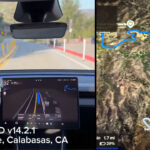Electrification is the future of the automotive industry, as seen with Tesla and other prominent manufacturers. However, shifting regulations have confused transportation companies in 2025 and beyond. The unclear path has left the electric vehicle (EV) sector in limbo despite previous pushes for greener innovation.
The regulatory complications start in Tesla’s previous home state of California. In mid-January, the California Air Resources Board withdrew its request for a waiver requiring commercial trucks to switch to zero-emission vehicles. The board was less confident in the waiver’s elimination with a new presidential administration.
Despite the waiver’s withdrawal, California still has regulations affecting commercial vehicles. For example, Executive Order N-79-20 requires all medium and heavy-duty trucks to have zero emissions by 2045. The mandate is sooner for drayage trucks, as these vehicles must comply by 2035.

Auto manufacturers in the Golden State must follow state law and move toward zero-emission light and heavy-duty vehicles by the targeted date. However, these automakers may feel less incentivized to follow through, considering California’s waiver withdrawal.
Another complication is a state law requiring truck manufacturers to fill quotas for EV sales. California’s Advanced Clean Trucks (ACT) rule says these companies must have at least 11% of their sales come from zero-emission class 4-8 trucks. By 2030, the requirement for these large vehicles will increase to 30%.
With shifting regulations, California manufacturers have found selling electric trucks more difficult. While the logistics industry wants to reduce emissions, some trucking companies prefer diesel engines when making more extended trips. The Tesla Semi can travel up to 500 miles on one charge, though other electric truck manufacturers have yet to catch up.
Oregon is another West Coast state that could alter its goals for electric trucks. Its environmental regulators recently delayed its clean truck rules, which were supposed to start in January 2025. However, parts of the new regulations will not begin until 2026.
These rules would have strengthened the emissions standards for heavy-duty trucks. When implemented, the regulations will scrutinize the nitrogen oxides (NOx) and particulate matter coming from the vehicles. While impactful, Oregon officials delayed the rules to allow automakers more time to develop engines.
Legislators in the Oregon House of Representatives have considered further delaying the deadline. House Bill 3119 would postpone these ACT standards until at least January 1, 2027.
Besides Oregon, other states like New York and Minnesota have followed California’s lead with clean truck rules. However, the Empire State has considered relaxing the regulations requiring manufacturers to make at least 7% of their sales electric trucks.
The auto industry recognizes that electric trucks reduce maintenance needs and heighten sustainability. However, charging infrastructure is the common denominator among New York, Oregon, California and other states. With insufficient systems, it’s more challenging to enforce emissions laws.
One reason New York has hesitated on its ACT rules is the lack of chargers on the Thruway Authority. Traveling on Interstate 90 or 87 doesn’t provide many opportunities for charging trucks. Therefore, New York truck drivers may struggle to reach their destination on one charge. Instead, they’ll spend more time at their depots.
Charging large trucks requires significant energy output, considering the battery size and vehicle weight. Using a standard level 2 or direct current (DC) fast charger may require commercial vehicles to be idle for more hours than companies would like.
Charging concerns are widespread, so researchers have developed new technologies to reduce idle time. For instance, the National Renewable Energy Laboratory (NREL) has created a megawatt charging system (MCS) to improve charging power. With 3.75 megawatts (MW) of power, drivers can return to the road more quickly.
While efficiently charging one truck can be challenging, connecting multiple vehicles could be too much for logistics professionals. The NREL’s MCS lets drivers access more powerful technology to charge commercial trucks. The researchers are optimistic about charging these large vehicles in 30 minutes or less.
States have shifted their priorities regarding commercial vehicle electrification to allow manufacturers more time. However, the automotive industry’s long-term focus remains on electrification and reducing carbon emissions. Tesla has led the way with its semi-truck battery range, thus encouraging the shift in the logistics sector.
Stay tuned for constant Tesla updates, follow us on:
Google News | Flipboard | X (Twitter) | WhatsApp Channel | RSS (Feedly).
Related News
- Tesla FSD v14.2.1 conquers ‘The Snake’ highway in California (hairpin turns, ~30 curves, video)
- Tesla FSD v14.2.1 recognizes hand gestures and proceeds a red light and more (videos)
- License Tesla FSD or face the disruption — Musk once again warns legacy automakers
- Tesla offers 30-day FSD v14 trials to HW4 vehicles in North America, FSD v14.2 goes wide release
- Tesla update 2025.44 goes wide with Radio Traffic Announcements, dashcam tweaks, preps for Holiday Update (Release Notes)
- Tesla FSD v14.2 modifies how you select Speed Profiles and Arrival Options







